Vol 1 Issue 2 | July-September 2021
Runs in the Family
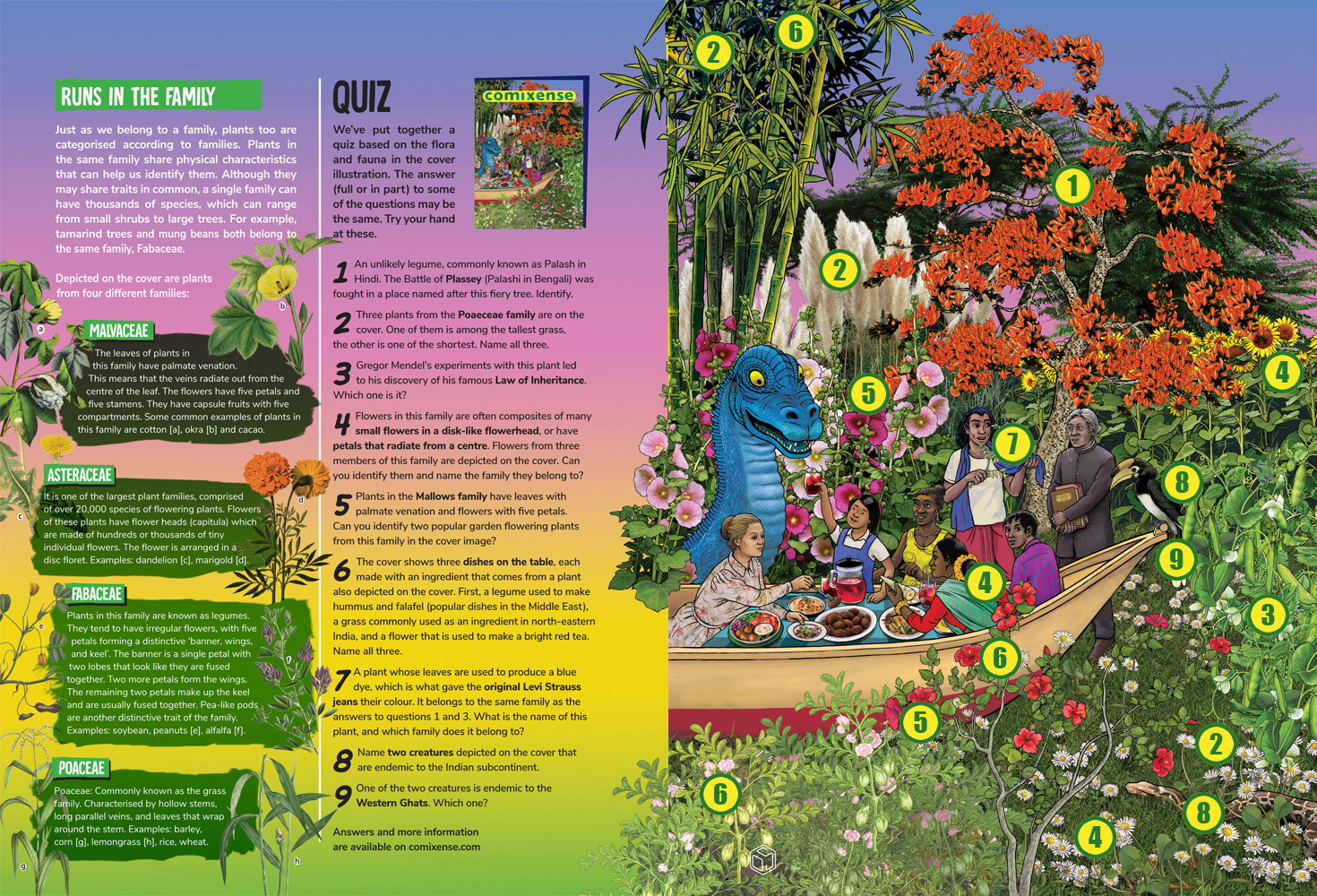
1. An unlikely legume, commonly known as Palash in Hindi. The Battle of Plassey (Palashi in Bengali) was fought in a place named after this fiery tree. Identify.
A. Sacred tree, or Butea teak (Butea monosperma)
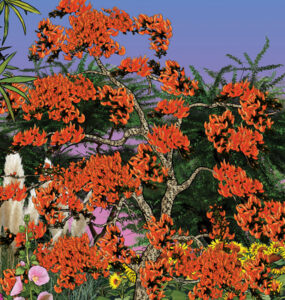
2. Three plants from the Poacecea family are on the cover. One of them is among the tallest grass, the other is one of the shortest. Name all three.
A. Bamboo (Bambusa vulgaris), Kans grass (Saccharum spontaneum), and Kentucky bluegrass (Poa pratensis)
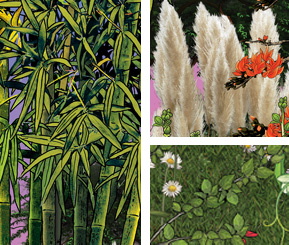
3. Gregor Mendel’s experiments with this plant led to his discovery of his famous Laws of Inheritance. Which one is it?
A. Pea (Pisum sativum)
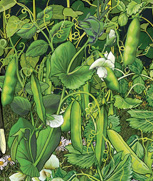
4. Flowers in this family are often composites of many small flowers in a disk-like flowerhead, or have petals that radiate from a centre. Flowers from three members of this family are depicted on the cover. Can you identify them and name the family they belong to?
A. Sunflower (Helianthus annuus), daisy (Bellis perennis), and marigold (Tagetes erecta), from the Asteraceae family
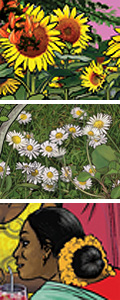
5. Plants in the Mallows family have leaves with palmate venation and flowers with five petals. Can you identify two popular garden flowering plants from this family in the cover image?
A. Hibiscus (Hibiscus rosa-sinensis) and hollyhock (Alcea rosea)
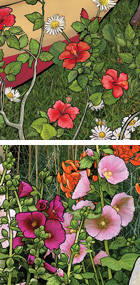
6. The cover shows three dishes on the table, each made from an ingredient that comes from a plant also depicted on the cover. First, a legume used to make hummus and falafel (popular dishes in the Middle East), a grass commonly used as an ingredient in north-eastern India, and a flower that is used to make a bright red tea. Name all three.
A. Chickpea (Cicer arietinum), bamboo (Bambusa vulgaris), and hibiscus (Hibiscus rosa-sinensis)
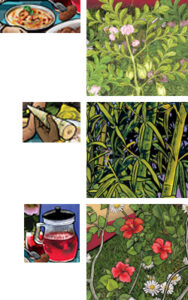
7. A plant whose leaves are used to produce a blue dye, which is what gave the original Levi Strauss jeans their colour. It belongs to the same family as the answers to questions 1 and 3. What is the name of the plant and which family does it belong to?
A. Indigo (Indigofera tinctoria). It belongs to the Fabaceaea family.
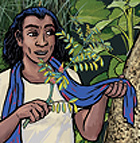
8. Name two creatures depicted on the cover that are endemic to the Indian subcontinent.
A. Indian Rock Python (Python molurus) and Malabar Pied Hornbill (Anthracoceros coronatus)
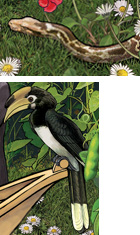
9. One of the two creatures is endemic to the Western Ghats. Which one?
A. The Malabar Pied Hornbill (Anthracoceros coronatus)

More about some of these plants and creatures
See Q1. Palash trees, also known as flame of the forest, have several names in both English and Indian vernacular languages. They are deeply intertwined with India’s history and culture, besides having many medicinal uses. Read about them here.
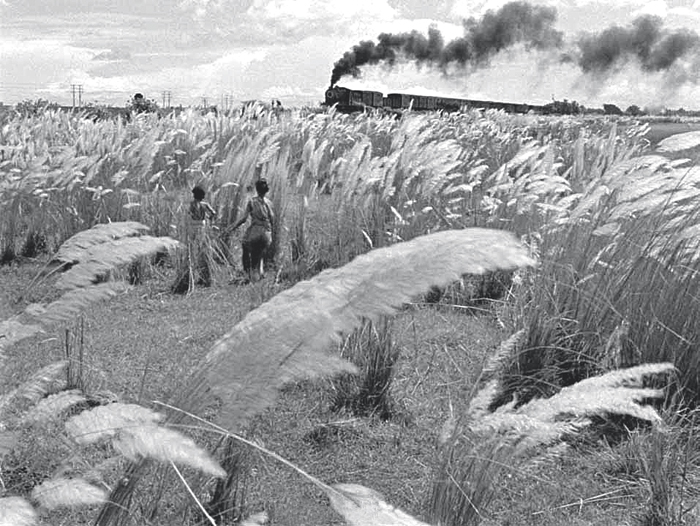
An iconic still from the 1955 Satyajit Ray film, Pather Panchali. The plants in this scene are Kans grass. See Q2.
See Q3. In 1856, Gegor Mendel, a Czech monk, began a decade-long research project to investigate patterns of inheritance. Although he began his research using mice, he later switched to honeybees and plants, ultimately settling on garden peas as his primary model system. A model system is an organism that makes it easy for a researcher to investigate a particular scientific question, such as how traits are inherited. By studying a model system, researchers can learn general principles that apply to other, harder-to-study organisms or biological systems, such as humans.
Mendel studied the inheritance of seven different features in peas, including height, flower color, seed color, and seed shape. To do so, he first established pea lines with two different forms of a feature, such as tall vs. short height. He grew these lines for generations until they were pure-breeding (always produced offspring identical to the parent), then bred them to each other and observed how the traits were inherited.
In addition to recording how the plants in each generation looked, Mendel counted the exact number of plants that showed each trait. Strikingly, he found very similar patterns of inheritance for all seven features he studied.
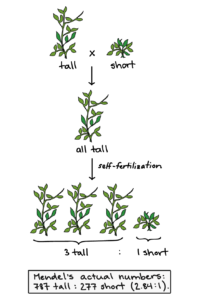
Read more about Mendel’s experiment with pea plants here.
See Q6. Did you know that the dish we refer to as ‘hummus’ in the rest of the world is actually the Arabic word for ‘chickpea’? The dish is actually called ‘hummus b’tahini’. Learn about the hotly contested history of who invented it here.
See Q7. Indigo dye is made from harvested leaves of the Indigo plant. They are soaked in water, where indican (which is an amino acid) starts to ferment. The product of this fermentation is called indoxyl and is left to dry in the air. It oxidizes and coagulates into the blue indigo which is used as a dye.
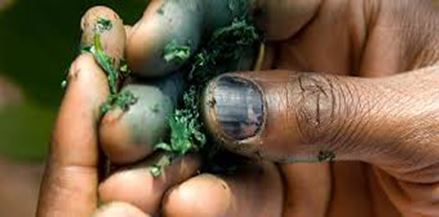
The English word ‘jeans’ is actually derived from its association to indigo dye. The 18th century Republic of Genoa was the largest buyer of indigo dye and traded dyed cotton and linen throughout Europe. Genoa was famous for a sturdy, deep blue cotton cloth, suited to making tough work clothes for fishermen, seamen, dock workers and miners. Since French was widely spoken throughout Europe at that time, the cloth was named ‘Bleu de Gênes’ (the blue of Genoa), which would later devolve into the English derivative ‘jeans.’
Read more about the history of indigo dye here.

